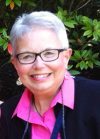She sat at my table surrounded by friends before taking a long, deep breath. “I don’t want to dominate the conversation,” she said, “but there are some things I’d like to share with you, and it’s a long story.” Assured by all of us that we did indeed want to hear what she had to tell, Linda began to describe the story of her adoption.
Adopted as an infant, her devoted parents showered her with a secure home, the riches of family life, unconditional love. Now in her 70s and with a growing family of her own, she longed to know more about her birth mother and father, possible siblings, the people with whom she shared genetic similarities.
Linda wanted the wholeness of knowing herself more fully in order to understand some of her characteristics, talents and interests—a way of coming home to herself. So she decided to take a DNA test, a brave move to discover possible ancestry and perhaps even her birth family’s identity.
She received her test results together with subsequent contacts for people who shared DNA so similar to hers that the likelihood of their being related was essentially conclusive. Soon after, she was contacted by one of these relatives, a newly discovered sister with whom Linda shared a birth father and three brothers.
What Linda wanted to describe to us that summer day around our table was her joyful apprehension over discovering her birth relatives, the pieces of her home—the identity she’d never known.
The truth is that we are, all of us, adopted sons and daughters.
All of us wrestle with questions of identity. Knowing our stories helps us know ourselves. “Who am I?” wrote German theologian Dietrich Bonhoeffer from the confines of his Gestapo prison cell. He was struggling to make sense of his life, grappling to find meaning in the chaos of a madman’s takeover of his beloved country. He knew that death likely awaited him.
The insecurities and self-doubts that plague us all can rob us of being at home with ourselves. Sometimes we struggle with who we are. We may not have had the experience of literal adoption and discovering our birth family later in life, but most of us know the lifelong vagaries of feeling at home with who we are, of knowing ourselves to be home, of liking our own company.
The truth is that we are, all of us, adopted sons and daughters. We long to belong, to be loved, to be at home with ourselves. The apostle Paul reminds us in his New Testament letters that we are adopted by God, made heirs, and given the right to be named by God and to inherit God’s identity. Along with Bonhoeffer in his poem “Who am I?” we can say with confidence, “Whoever I am, Thou knowest, O God, I am Thine!”
Linda’s meetings with her birth siblings helped her make sense of a family legacy of music, of educated parents whose life circumstances made it impossible to marry and care for a child, and of beloved adoptive parents. She was able to incorporate that missing part of her identity into an already satisfyingly full life and, in so doing, discover a sense of wholeness and a coming home to herself.
When, as a 12-year-old, Linda heard for the first time the adoption texts in Paul’s letters, she knew herself to be home for good. As adopted sons and daughters, we are, all of us, home.
Read parts one and two in this series.



